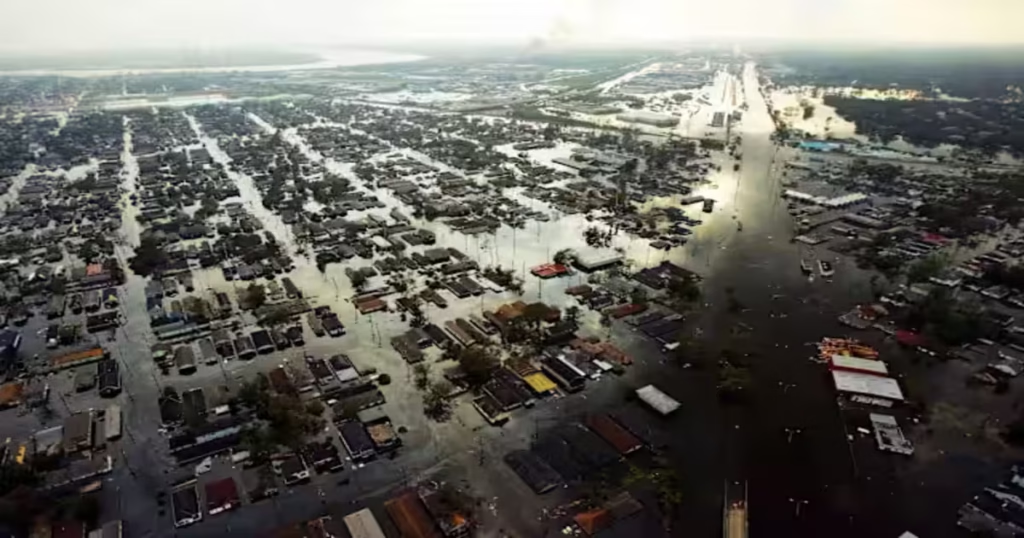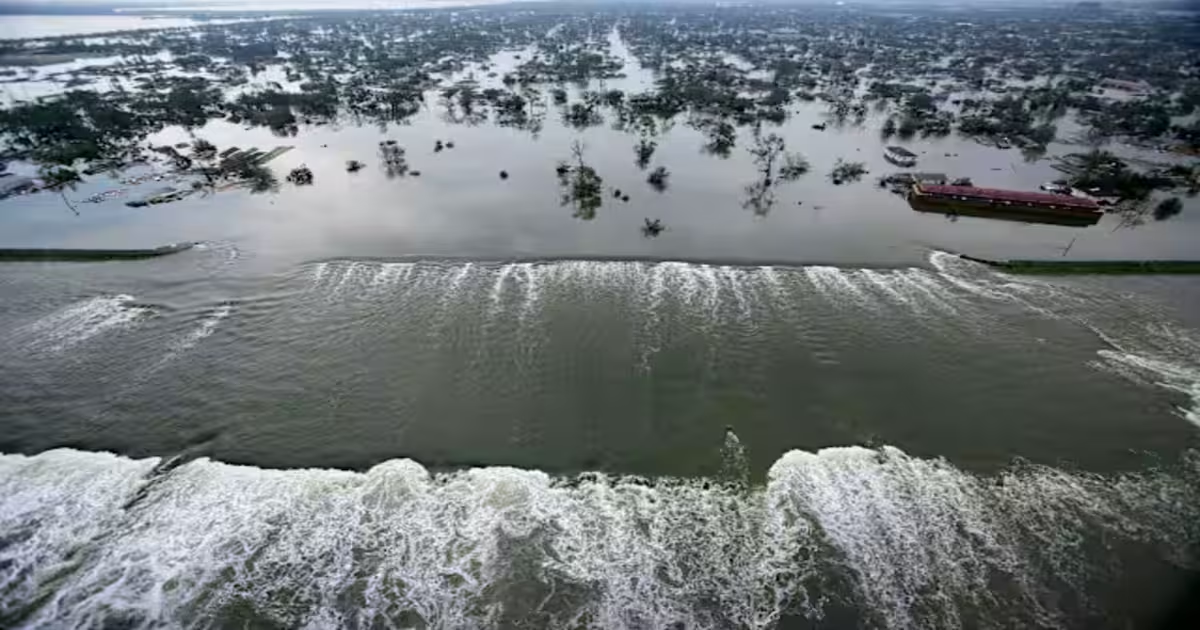Introduction
When Hurricane Katrina struck the Gulf Coast of the United States in August 2005, it left behind a trail of devastation that changed the nation forever. But while Katrina was a powerful natural disaster, much of the catastrophic damage in New Orleans was not caused by the storm itself—but by the failure of the levee system, an engineered defense meant to protect the city. These levee breaches, due to flawed engineering design and years of neglect, led to the deaths of over 1,800 people, turning the disaster into one of the most tragic civil engineering failures in U.S. history.

📍 Background: What Happened During Hurricane Katrina?
On August 29, 2005, Hurricane Katrina, a Category 3 hurricane, made landfall in Louisiana. With wind speeds over 125 mph and an enormous storm surge, the hurricane pushed Gulf waters toward New Orleans—a city already vulnerable due to its geography. About 80% of New Orleans lies below sea level, making levees and floodwalls critical for protection.
Despite being a known risk, the city’s flood defense system was not ready. Within hours of landfall, multiple levees and floodwalls failed catastrophically, leading to the inundation of approximately 80% of New Orleans.
🏗️ Why Did the Levees Fail?
Several official investigations—including by the U.S. Army Corps of Engineers, the National Science Foundation, and independent academic panels—concluded that engineering flaws and poor maintenance were key reasons behind the levee failures.
1. Design Flaws
The levees and floodwalls were poorly designed, particularly the I-walls—concrete floodwalls that failed to hold back the storm surge. Key engineering oversights included:
- Inadequate understanding of soil conditions
- Underestimation of water pressure and storm surge impact
- Use of outdated modeling techniques
A notable example was the 17th Street Canal breach, where engineers assumed the walls would withstand higher water levels, but the foundation soils beneath the wall were too weak, causing collapse.
2. Poor Construction and Materials
Some levees were built using substandard materials, including weak clay and sand. Additionally, gaps between levee segments, and poor transitions between floodwalls and levees, made them vulnerable to overtopping and erosion.
3. Lack of Maintenance
Years of underfunding and neglect meant that critical components of the levee system deteriorated. Vegetation overgrowth, erosion, and undocumented repairs added to the instability.
4. Fragmented Oversight
Responsibility for the levee system was divided among multiple agencies—local levee boards, state authorities, and the U.S. Army Corps of Engineers—leading to a lack of accountability and cohesive strategy.
📊 Human and Economic Toll
The failure of New Orleans’ levees was not just a technical error—it had devastating human consequences:
- Deaths: Over 1,800 people lost their lives, most of them in New Orleans.
- Displacement: More than 1 million residents were displaced, many permanently.
- Damage Cost: Total economic losses exceeded $125 billion, making Katrina the costliest natural disaster in U.S. history.
- Infrastructure Collapse: Critical infrastructure, including roads, hospitals, schools, and utilities, were wiped out.
📌 Who Was Responsible?
Multiple investigations held the U.S. Army Corps of Engineers primarily responsible for the design and construction failures. In 2009, a federal judge ruled that the Corps’ “negligent maintenance of the Mississippi River-Gulf Outlet (MRGO)” was a contributing factor to the disaster.
However, responsibility also extended to:
- Local levee boards for mismanagement
- Congress for underfunding maintenance
- State officials for poor coordination
🛠️ Post-Katrina Rebuilding and Reforms
In the aftermath, there was a massive effort to rebuild and strengthen New Orleans’ flood defense systems:
✔️ Hurricane and Storm Damage Risk Reduction System (HSDRRS)
The federal government invested $14.5 billion into building a new, comprehensive system of levees, floodwalls, and pumping stations around New Orleans.
✔️ Independent Levee Investigation Team (ILIT) Reports
Comprehensive reviews led to new engineering standards, better modeling tools, and updated flood risk maps.
✔️ Infrastructure and Engineering Reforms
- Improved soil testing and analysis procedures
- Updated FEMA flood zone designations
- Reorganization of levee oversight to ensure accountability
🌎 Global Lessons from New Orleans
Hurricane Katrina taught civil engineers, urban planners, and policymakers critical lessons:
- Engineering structures must be designed for worst-case scenarios, not average conditions.
- Maintenance is as important as design—a well-built system still fails if neglected.
- Climate change and rising sea levels increase the vulnerability of coastal cities worldwide.
- Integrated management of infrastructure projects is crucial to avoid fragmented responsibility.
Countries such as the Netherlands and Japan, known for their advanced flood control systems, have since worked more closely with U.S. engineers to share best practices.
🔍 Key Takeaways for Civil Engineers
For civil engineering professionals and students, the Katrina levee failures are now a case study in what can go wrong when planning, design, execution, and oversight are misaligned. Key takeaways include:
- Always evaluate geotechnical risks thoroughly.
- Design systems with redundancies and fail-safes.
- Prioritize regular inspections and long-term maintenance.
- Advocate for funding critical infrastructure—even when it’s not visible or politically popular.
📝 Conclusion
The tragedy of Hurricane Katrina and the levee failures in New Orleans is a stark reminder that civil engineering is not just about building structures—it’s about protecting lives. With the world facing more extreme weather events due to climate change, the lessons from New Orleans are more relevant than ever. Good engineering saves lives; flawed engineering costs them.

